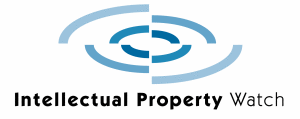 [Catherine Saez for IP Watch, Link (CC-BY-NC-SA)] As the ratification by the European Union of an international treaty creating an exception to copyright for visually impaired people nears, a leaked text shows that the directive implementing the treaty in the EU might come with safeguards limiting the scope of the treaty, allegedly pushed by the publishing industry.
[Catherine Saez for IP Watch, Link (CC-BY-NC-SA)] As the ratification by the European Union of an international treaty creating an exception to copyright for visually impaired people nears, a leaked text shows that the directive implementing the treaty in the EU might come with safeguards limiting the scope of the treaty, allegedly pushed by the publishing industry.
The leaked document (from the General Secretariat of the Council of the EU to the Permanent Representatives Committee), seen by Intellectual Property Watch, is the latest draft proposal for a directive of the European Parliament and the Council. The directive would be on “certain permitted uses of works and other subject-matter protected by copyright and related rights for the benefit of persons who are blind, visually impaired or otherwise print disabled and amending Directive 2001/29/EC on the harmonisation of certain aspects of copyright and related rights in the information society.”
According to the document, on 14 September 2016, the EU Commission submitted a draft proposal for a Directive and a Regulation for the implementation of the Marrakesh Treaty to Facilitate Access to Published Works for Persons Who Are Blind, Visually Impaired or Otherwise Print Disabled. The 2013 treaty, managed by the World Intellectual Property Organization. entered into force on 30 September 2016.
Today, the Corporate Europe Observatory published a research paper saying that “certain EU member states and Members of the European Parliament have sought to prioritise the economic interest of the publishers’ lobby over support for print-disabled people” (IPW, Copyright Policy, 21 March 2017).
The vote of the European Parliament on the ratification is scheduled for 23 March, the document said.
The document lists the main changes compared to the initial proposed draft including:
– Alignment of the definition of authorised entities as in the Marrakesh Treaty in Article 2
– Inclusion of the three-step test provision in Article 3.2a
– Inclusion of obligations on authorised entities in Article 4b (as in Article 5 of the draft regulation)
– Extension of the transposition period from 12 to 24 months (Article 9)
– Introduction of flexibility for member states regarding compensation and commercial availability as reflected in recital 11
The so-called three-step test refers to Article 9(2) of the Berne Convention for the Protection of Literary and Artistic Works. It provides exceptions to the right of reproduction, stating that, “It shall be a matter for legislation in the countries of the Union to permit the reproduction of such works in certain special cases, provided that such reproduction does not conflict with a normal exploitation of the work and does not unreasonably prejudice the legitimate interests of the author.”
It also appears in the World Trade Organization Agreement on Trade-Related Intellectual Property Rights (TRIPS), in Article 13 (Limitations and Exceptions).
The three-step test provides for limitations and exceptions to the Marrakesh treaty, and appears in Article 12 of the Marrakesh Treaty.
Authorised Entities, Commercial Availability
Article 4b (Transparency and exchange of information) of the leaked draft directive asks that member states encourage authorised entities established in their territory to communicate (on a voluntary basis) their names and contact details.
Article 4b further states that member states shall provide the information they have received from those authorised entities to the European Commission, which should make such information publicly available in a central point of information online and keep it up to date.
Recital 11 of what looks like regulations preceding the text of the directive states: “Member States may determine whether exceptions or limitations under this Directive are subject to fair compensation. Furthermore, Member States may confine those exceptions and limitations under this Directive to works which, in the particular accessible format, cannot be obtained commercially under reasonable terms for beneficiary persons.”
This language on commercial availability is found under Article 4.4 of the Marrakesh Treaty: National Law Limitations and Exceptions Regarding Accessible Format Copies, as follows: “A Contracting Party may confine limitations or exceptions under this Article to works which, in the particular accessible format, cannot be obtained commercially under reasonable terms for beneficiary persons in that market. Any Contracting Party availing itself of this possibility shall so declare in a notification deposited with the Director General of WIPO at the time of ratification of, acceptance of or accession to this Treaty or at any time thereafter.”
Article 4.5 of the Marrakesh Treaty states that “It shall be a matter for national law to determine whether limitations or exceptions under this Article are subject to remuneration.”
Civil Society, Visually Impaired Concerned
Civil society and visually impaired people have voiced concerns over the implementation by the European Union of the Marrakesh Treaty, and in particular that some provisions of the directive might undermine the goals of the treaty, which is to diminish the “book famine” for visually impaired people.
The Marrakesh Treaty is the first treaty ever to grant exceptions and limitations to copyrights and was strongly resisted during negotiations by some developed countries, and the publishing industry. Some developed countries argued that the treaty would create a precedent and open the way to more requests for exceptions and limitations to copyrights, for example in favour of education, libraries and archives.
The publishing industry was concerned that the exceptions and limitations would lead to piracy since some special format works could be used by non-visually impaired people.




